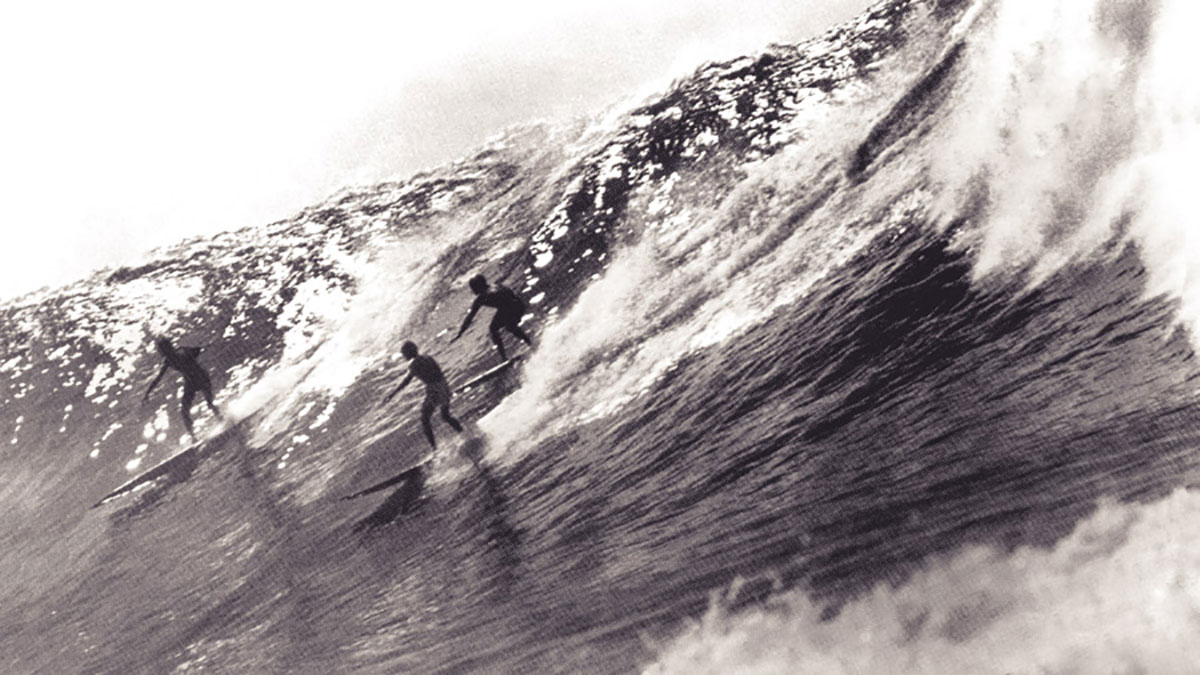History Of Surfing: The First Best Big-Wave Photo
BY DAVIS JONES

In November 1953, the continental U.S. got its first truly starstruck impression of surfing through a photograph taken by a part-time beachboy named Thomas “Scoop” Tsuzuki. In its frame was Woody Brown, George Downing, and Buzzy Trent, skillfully trimming down a 15-foot wave at Makaha. The photo would later land on the front page of the Honolulu Star-Bulletin, and it soon traveled to newspapers from Reno, Nevada, to Sheboygan, Wisconsin, where mainland surfers were transfixed by the group’s smooth conquering of the giant wave (Downing would later tell the Star-Bulletin that only Brown, pictured on the far left, made it out. “That was point break at Makaha,” Downing said. “Where Woody was, he was on the perfect place on the wave.”). Matt Warshaw, the mind behind History of Surfing, explains the fascination of the image in his newest HOS chapter:
Surf photos had been published in magazines and newspapers across the nation for years, but the waves shown were rarely larger than six feet. Tsuzuki’s shot was different. Shocking, in fact. Nonsurfers marveled at the daredevilry of it all, while every mainland surfer with an ounce of big-wave ambition looked at the photo and experienced the same rush of fear and attraction. The wave was huge by surfing standards of the time. Yet it somehow didn’t register as terrifying—the smoothness was too inviting, and all three riders were blowing down the line in such an easy and controlled style.
Sport historian David Davis comments similarly in a Deadspin piece from 2014 titled “The Photo That Took Surfing Worldwide.” In it, he writes that the photo drew a generational line in the sand between surfing’s past and present.
“Surfing was no longer going to be dominated by the traditional methodology of Duke Kahanamoku, standing regally on his massive redwood board as he glided to the beach at Waikiki, the dulcet sounds of the ukulele as background music,” Davis writes. “No, surfing was poised to head in a new direction. The surfers in this generation lived to chase the gnarliest waves and to ride as close to the curl as possible, to the accompaniment of a snarling electric guitar.”







